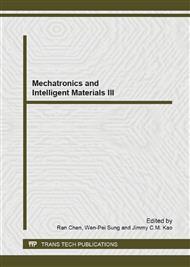[4]
Impact Analysis of EFP on the Influence of Liner Curvature Radius. For the hemispherical liner, its curvature radius will largely determine the shape and speed of the EFP in the premise of other certain charge structure parameters. The change of liner curvature radius will cause a change of the role position of the explosion shock wave, and then the material's flow of the curvature will be changed [5]. When the radius of the liner are confirmed as R1=40, 50, 60 and 70, results are showed in Figure 6. Fig.6 Speed of EFP change along with radius of curvature It can be seen from figure 6 EFP gains the maximum speed as liner curvature radius equal to 1 times height of charge. From the forming result, EFP slenderness ratio is smaller, and present a short dense along with the increase of the radius of curvature. But EFP tensile and too long, which is not conducive to stable formation, so little effective penetration body forming, then the damage efficiency to targets lower with the smaller the radius of curvature. Therefore, in order to obtain better forming, more great speed and higher density EFP. Just for this structure design, the radius of liner curvature suggest taking between 45mm and 55mm, that is the matching relation of the shaped charge liner curvature radius R1 and charge height L between 0.9<R1/L<1.1. Conclusions (1) The circumferential linear cutting warhead charge technology requires the warhead several attacks ability in certain space, which improves damage and blockade probability. (2)Optimization scheme shows that technology blasting up and down at the same time using this type of charge technology. The shaped charge liner curvature radius and shot elevation ratio should be controlled in between 0.9 and 1.1. (3)Considering add more EFP against dense target according to characteristics of target size and penetration ability. Reference:
Google Scholar
[1]
AC Robinson, M G Vigil. An analytical-experimental comparison of 150 and 220 grain per foot liner shaped charge performance, DE87-014217 [R]. (1987)
Google Scholar
[2]
Alford Roland, Alford Sidney, Explosive charge. US2010/0018427 A1[P].(2010)
Google Scholar
[3]
Yuchun Li, Dangyong Shi, Yuan Zhao. ANSYS 11.0/LS-DYNA basic theories and criterions in applications [M] .BeiJing: China Water Power Press.(2008)
Google Scholar
[4]
Shouzhong Zhang. Explosion and impact dynamics [M]. Beijing: Weapons Industry Press.(1993)
Google Scholar
[5]
Jianwei Jiang, Jun Yang, Jianbing Men. Numerical Simulation for the Parameter Study of with Explosively Formed Projectile Aluminum Case [J]. Journal of Beijing Institute of Technology. (2004)
Google Scholar


